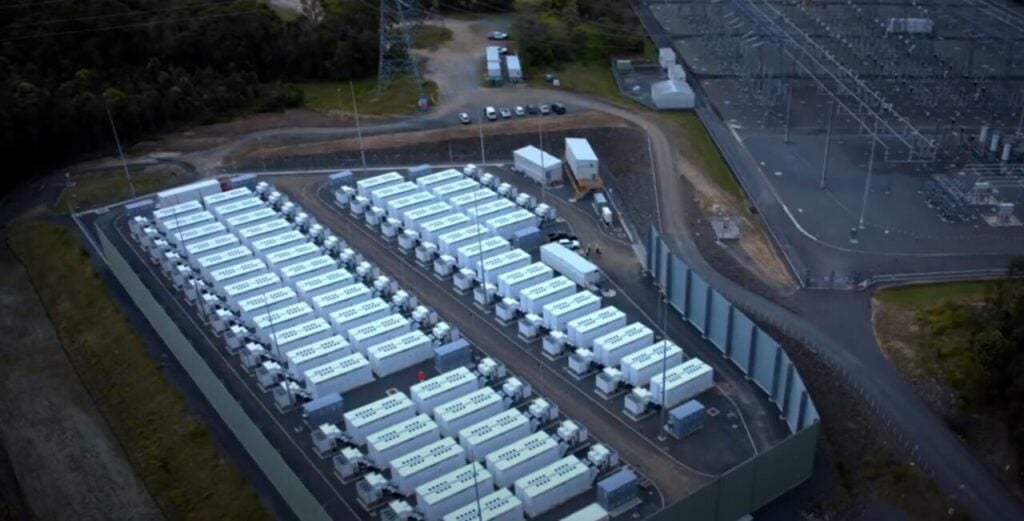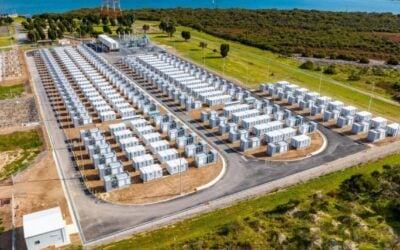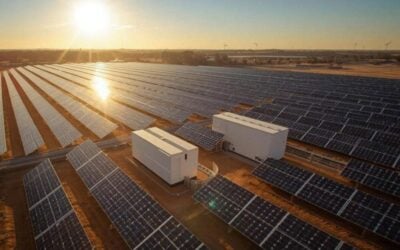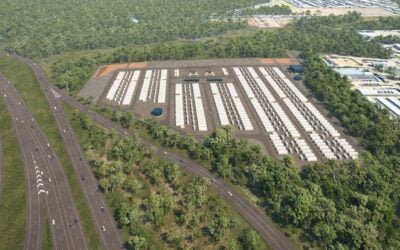
Australia’s National Electricity Market (NEM) achieved multiple battery energy storage records during the weekend of 27-28 September 2025, highlighted by total storage capacity reaching 6,591.5MWh for the first time.
According to data analysis from Geoff Eldridge of Global Power Energy (GPE NEMLog), NEM-wide battery storage capacity reached 6,591.5MWh at 16:30 on Saturday (27 September), representing an 11.7% increase from the previous record of 5,900.6MWh set just ten days earlier on 17 September.
The weekend also saw New South Wales (NSW) establish new battery energy storage discharge records on consecutive days. NSW’s battery enegry storage fleet reached a maximum discharge of 659.9MW at 18:40 on Saturday, before setting another record of 664.3MW at 18:25 on Sunday – a 0.7% increase within 24 hours.
Queensland contributed to the milestone weekend with a new battery charging record of 658.8MW at 10:55 on Sunday, exceeding the previous record of 643.8MW set on 19 September by 2.3%.
Try Premium for just $1
- Full premium access for the first month at only $1
- Converts to an annual rate after 30 days unless cancelled
- Cancel anytime during the trial period
Premium Benefits
- Expert industry analysis and interviews
- Digital access to PV Tech Power journal
- Exclusive event discounts
Or get the full Premium subscription right away
Or continue reading this article for free
For readers unaware, the NEM is the wholesale electricity market and physical power system that supplies electricity to Australia’s eastern and south-eastern states, excluding Western Australia and the Northern Territory.
System balancing and solar integration
The record-breaking performance demonstrates how battery energy storage systems (BESS) are increasingly essential for balancing Australia’s electricity grid, particularly in managing the daily swing between midday solar surpluses and evening demand peaks.
“Storage filled strongly during the middle of the day on Saturday, with NEM-wide energy storage pushing past 6.5GWh for the first time,” noted Eldridge on LinkedIn.
This pattern of daytime charging and evening discharging has become more pronounced as Australia’s renewable energy penetration increases. The NEM recently set a renewable energy share record of 78.6%, creating a greater need for flexible storage to shift excess generation to periods of higher demand.
The Queensland charging record is particularly significant as it demonstrates batteries absorbing more solar generation during late morning hours, helping to reduce potential curtailment during periods of excess production.
State-by-state energy storage deployment
Analysis of the weekend’s performance reveals that Victoria and NSW continue to dominate Australia’s battery storage capacity. Victoria became the first Australian state to cross the 1GW BESS charging milestone earlier this month, and both states have maintained aggressive deployment schedules.
Queensland and South Australia are playing smaller but increasingly important balancing roles in the overall NEM storage landscape.
South Australia, which pioneered large-scale battery energy storage deployment with the 150MW/193.5MWh Hornsdale Power Reserve in 2017, continues to demonstrate how battery storage systems can provide essential grid services in a high-renewable penetration environment.
The data also revealed some operational challenges in the expanding battery fleet. Sharp drops and increases in storage levels were observed during the weekend, which Eldridge attributed to temporary losses of data feeds from various batteries.
“The sharp drops and increases in storage appear to be related to loss of data feeds from various batteries. For instance, the drop and increase in Queensland from 14:20 to 15:40 appears to be the loss of BDU Storage data from Greenbank BESS,” Eldridge explained.
Future outlook
While the weekend’s records demonstrate progress in Australia’s battery storage deployment, they also highlight the scale of future requirements as the country continues its energy transition.
“Each new record illustrates momentum but also underscores how much more storage will be needed to manage seasonal and multi-day challenges,” Eldridge explained.
The Australian Energy Market Operator’s 2024 Integrated System Plan identified a need for approximately 46GW/640GWh of dispatchable storage capacity by 2050 to support the country’s transition to a predominantly renewable energy electricity system. The current records, while impressive, represent only a fraction of this projected requirement.
Readers of Energy-Storage.news will be aware of several major battery storage projects operating or currently under construction across the NEM, including the 300MW/1,200MWh Stanwell Battery in Queensland, the operational 850MW/1,680MWh Waratah Super Battery in NSW, and the 500MW/1,000MWh 2-hour duration Liddell BESS, also in NSW.
Our publisher, Solar Media, will host the Energy Storage Summit Asia 2025 on 7-8 October 2025 in Manila, the Philippines. You can receive 20% off your ticket using the code ESN20 at checkout.





